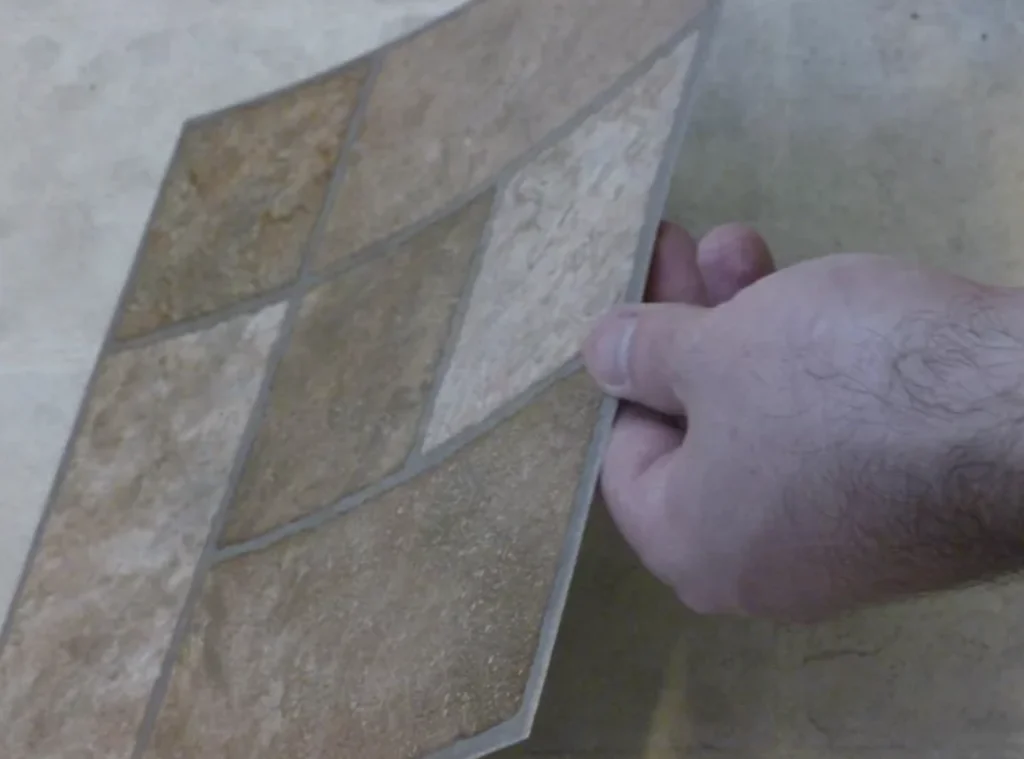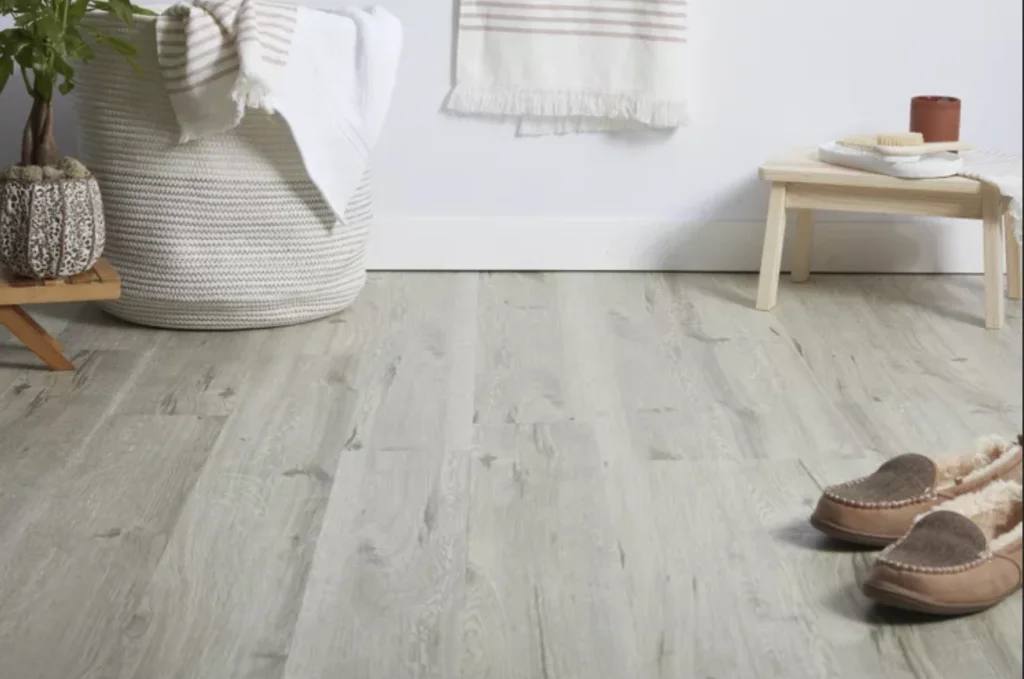Vinyl flooring has long been a popular choice in homes due to its durability, affordability, and versatility. As one of the most resilient flooring options, vinyl can handle moisture, wear, and tear, making it ideal for high-traffic areas like kitchens and bathrooms. With advancements in design, vinyl flooring is also available in various types, each tailored to meet different needs and style preferences. This guide will explore the three main types of vinyl flooring—Vinyl Composite Tile (VCT), Sheet Vinyl, and Luxury Vinyl Flooring (LVF)—and help you choose the best fit for your home.
Understanding Vinyl Flooring Composition
Vinyl flooring is crafted from synthetic materials, primarily polyvinyl chloride (PVC), along with fiberglass and other plasticizers. It generally consists of several layers:
- Base Layer: Made of PVC or other resilient materials, providing a durable foundation.
- Design Layer: The printed layer that mimics wood, stone, or other natural textures.
- Wear Layer: A transparent protective layer that guards against scratches and stains.
Types of Vinyl Flooring

Vinyl flooring is available in three main types, each with unique properties and applications.
1. Vinyl Composite Tile (VCT)
Overview of VCT
Vinyl Composite Tile (VCT) is one of the most budget-friendly types of vinyl flooring, made by compressing limestone, PVC, and other materials into solid sheets, which are then cut into tiles.
Pros of VCT
- Affordable: VCT tiles are relatively inexpensive.
- DIY-Friendly: Easily installed with peel-and-stick or glue-down options.
- Replaceable: Damaged tiles can be individually replaced.
Cons of VCT
- Higher Maintenance: Requires regular polishing to maintain the surface.
- Less Moisture Resistance: Water can seep through seams, making it less suitable for wet areas.
2. Sheet Vinyl

Overview of Sheet Vinyl
Sheet vinyl is a continuous roll of vinyl, typically 6 to 16 feet wide, designed for seamless, water-resistant coverage.
Pros of Sheet Vinyl
- Waterproof: Ideal for bathrooms and kitchens due to its lack of seams.
- Cost-Effective: Sheet vinyl is generally inexpensive and readily available.
Cons of Sheet Vinyl
- Installation Challenges: Handling large sheets can be tricky for DIYers.
- Limited Design Options: Fewer options compared to LVF.
3. Luxury Vinyl Flooring (LVF)
Overview of LVF
Luxury Vinyl Flooring, often available as tiles (LVT) or planks (LVP), is a high-end option known for its realistic designs and durable build.
Pros of LVF
- Premium Aesthetic: Mimics wood, stone, or tile very realistically.
- Durability: LVF can withstand heavy foot traffic and water exposure.
- Easy Installation: Often designed with a click-and-lock system.
Cons of LVF
- Higher Cost: Generally more expensive than other vinyl options.
Detailed Comparison of Vinyl Flooring Types
| Feature | Vinyl Composite Tile (VCT) | Sheet Vinyl | Luxury Vinyl Flooring (LVF) |
|---|---|---|---|
| Cost | Low | Low to Moderate | Moderate to High |
| Water Resistance | Moderate | High | High |
| Durability | Moderate | Moderate | High |
| Design Options | Limited | Moderate | Extensive |
Selecting the Right Vinyl Flooring for Different Rooms
- Bathrooms and Kitchens: Sheet vinyl or LVF are ideal for their water resistance.
- Living Rooms: LVF offers a more upscale look suitable for main living areas.
- Basements: LVF is a good choice as it resists moisture and is easy to install.
Installation Methods
Glue-Down Installation
Best for rooms with high traffic, this method provides stability but can be harder to remove.
Floating Installation
Easier for DIY installation, this method involves clicking tiles or planks into place without adhesives.
Key Features to Consider When Choosing Vinyl Flooring

- Thickness: Thicker vinyl often lasts longer and provides more comfort underfoot.
- Wear Layer: A thicker wear layer improves resistance to scratches and stains.
- Surface Texture: For wet areas, a textured surface is recommended for better traction.
Comparing Vinyl to Other Flooring Materials
Vinyl often costs less than hardwood and tile, making it budget-friendly, and is easier to maintain compared to laminate. However, it may lack the natural warmth of wood or the solid feel of ceramic tile.
Common Myths About Vinyl Flooring
- Myth: Vinyl flooring is outdated.
Reality: LVF has brought vinyl back in style with realistic textures and patterns. - Myth: Vinyl is always slippery.
Reality: Textured surfaces offer traction, and non-slip options are available.
Tips for Maintaining Vinyl Flooring
- Cleaning: Use mild soap and water for regular cleaning. Avoid using abrasive cleaners.
- Preventing Damage: Place pads under furniture legs to prevent scratching.
Conclusion
Vinyl flooring offers a wide range of options, from budget-friendly VCT to high-end LVF. Each type comes with unique benefits, so consider your specific needs, style preferences, and budget. With proper care and installation, vinyl flooring can be a durable, stylish, and cost-effective choice for any room.
FAQs
Which type of vinyl flooring is the most durable?
Luxury Vinyl Flooring (LVF) is generally the most durable, designed to withstand heavy traffic and moisture.
Can I install vinyl flooring in my bathroom?
Yes, both sheet vinyl and LVF are water-resistant and suitable for bathrooms.
How often does VCT need maintenance?
VCT requires regular polishing to maintain its finish, usually every few months.
Is vinyl flooring eco-friendly?
Vinyl is not considered the most eco-friendly option but can be recycled.
How can I prevent my vinyl flooring from fading?
Avoid prolonged exposure to direct sunlight or invest in UV-protected vinyl products.
